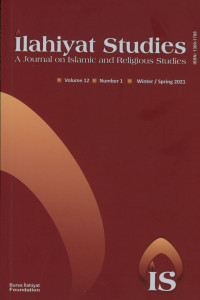Gnostic Apocalypse and Islam: Qur’an, Exegesis, Messianism, and the Literary Origins of the Babi Religion, by Todd Lawson
First paragraph: The title, circumstantial and long-winded as it is, bears witness to a protracted process of maturity. The author addressed the topic in his PhD thesis (McGill Univ., 1987), and he has apportioned the material to a series of articles presented at a number of relevant conferences. He stands within a tradition: the origins of Bābism (and, in its wake, the Bahāʾī religion) attracted E. G. Browne’s interest when he spent “A Year amongst the Persians” in 1887-1888, and anglophone scholarship followed with works written by Hasan Balyuzi (1973), Denis MacEoin (1979, 1992, 2009), and Abbas Amanat (1989). The present book (140 pages of text with 34 pages of endnotes) addresses the philological hub of the problem, the Bāb’s Tafsīr sūrat Yūsuf, a strange product of religious Schwarmgeisterei that is anything but what it pretends to be, namely exegesis. Sūra 12 of the Qurʾān serves as a mere gimmick; the “commentary” rarely refers to the scriptural basis but accumulates a multitude of enigmatic allusions that must be decoded in the process of reception. Most of these statements conjure up the Qurʾān itself, but on the basis of a specific interpretation that could develop only in a late Iranian intellectual milieu after the spread of the Shaykhī movement. The Tafsīr itself was subdivided into 111 “sūras” of 42 verses each (because 42 is the numerical value of the word balā, the answer given by mankind to the famous a-last question in Q 7:172).
Gnostic Apocalypse and Islam: Qur’an, Exegesis, Messianism, and the Literary Origins of the Babi Religion, by Todd Lawson
First paragraph: The title, circumstantial and long-winded as it is, bears witness to a protracted process of maturity. The author addressed the topic in his PhD thesis (McGill Univ., 1987), and he has apportioned the material to a series of articles presented at a number of relevant conferences. He stands within a tradition: the origins of Bābism (and, in its wake, the Bahāʾī religion) attracted E. G. Browne’s interest when he spent “A Year amongst the Persians” in 1887-1888, and anglophone scholarship followed with works written by Hasan Balyuzi (1973), Denis MacEoin (1979, 1992, 2009), and Abbas Amanat (1989). The present book (140 pages of text with 34 pages of endnotes) addresses the philological hub of the problem, the Bāb’s Tafsīr sūrat Yūsuf, a strange product of religious Schwarmgeisterei that is anything but what it pretends to be, namely exegesis. Sūra 12 of the Qurʾān serves as a mere gimmick; the “commentary” rarely refers to the scriptural basis but accumulates a multitude of enigmatic allusions that must be decoded in the process of reception. Most of these statements conjure up the Qurʾān itself, but on the basis of a specific interpretation that could develop only in a late Iranian intellectual milieu after the spread of the Shaykhī movement. The Tafsīr itself was subdivided into 111 “sūras” of 42 verses each (because 42 is the numerical value of the word balā, the answer given by mankind to the famous a-last question in Q 7:172).
Keywords:
Gnostic Apocalypse, Islam, Qur’an Babi Religion,
- ISSN: 1309-1786
- Başlangıç: 2010
- Yayıncı: Bursa İlahiyat Vakfı
Sayıdaki Diğer Makaleler
Validating the Persian Integrated Spiritual Intelligence Scale within an Islamic Context
Ebrahim KHODADADY, Atefeh TAHERYAN, Armin TAVAKOLİ
The Spirituality of Shiʿi Islam: Beliefs and Practices, by Mohammad Ali Amir-Moezzi
Mystical Interpretation of Sheikh Badr al-Dīn Ibn Qāḍī Samāwnā’s Controversial Ideas
Philosophy in Early Safavid Iran: Najm al-Dīn Maḥmūd al-Nayrīzī and His Writings, by Reza Pourjavady
Change in the Modern Practice of Ijtihād: The Case of Islamic Finance
